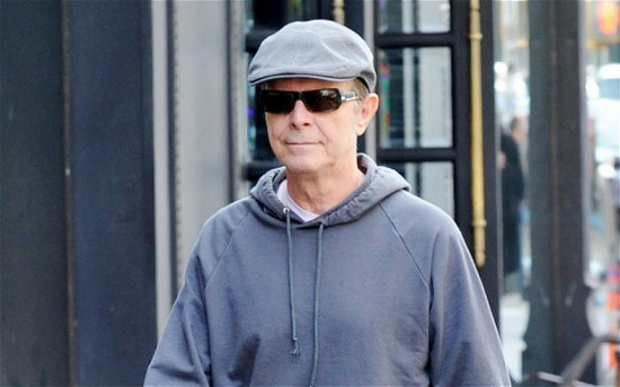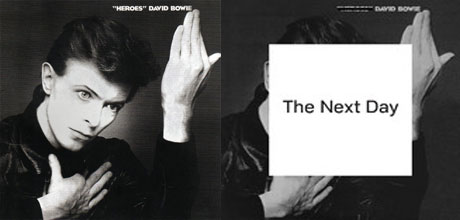
David Bowie first new single and video in 10 years
Where Are We Now? has video directed by artist Tony Oursler referencing Bowie's time in Berlin in the Seventies
Quoting a line from The Secret Life of Arabia (1977), Davidbowie.com announced the return of the recording artist this morning, with the release of his new single, Where Are We Now? The news came as a surprise to many in what's left of the music business, though the date is an auspicious one - today is Bowie's 66th Birthday.
The single is accompanied by a video directed by Tony Oursler which alludes to Bowie's time in Berlin in the 70s, when he was famously living on a diet of milk, bratwurst and cocaine. The experience resulted in three of the most critically acclained albums of his career, Low, Heroes and Lodger - albums that have become known as the Berlin Trilogy even though Lodger was largely recorded in Swtizerland and the US.
In the Tony Oursler-directed video for Where Are We Now? Bowie is seen looking in on footage of the auto repair shop beneath the apartment he lived in Berlin along with stark images of the city at the time and now. New York born video artist Oursler is known for his fractured-narrative handmade video tapes.
Oursler was born in New York in 1957 and completed a BA in fine arts at the California Institute for the Arts, Valencia, California in 1979. His art takes in a range of mediums: he works with video, sculpture, installation, performance and painting. He's been exhibited in prestigious institutions including the Walker Art Center, Minneapolis, Documenta VIII, IX, Kassel, MoMA, Whitney Museum of American Art, the Centre Georges Pompidou, the Carnegie Museum of Art, Pittsburgh, Skulptur Projekte, Munster, Washington, and The Tate.
His early works such as The Loner, 1980 and EVOL 1984 involved elaborate sound tracks, painted sets, stop-action animation and optical special effects. These early installation works are immersive dark-room environments with video, sound, and language mixed with colourful constructed sculptural elements. In the projects Oursler experimented with methods of removing the moving image from the video monitor using reflections in water, mirrors, glass and other devices. "L-7, L-5", exhibited at the Kitchen NYC in 1983, used the translucent quality of video reflected on broken glass.
He began began working with small LCD video projectors in 1991 in his installation The Watching which was presented at Documenta 9, and featured his first video doll and dummy. This work utilizes handmade soft cloth figures combined with expressive faces animated by video projection.
Oursler then produced a series of installations that combined found objects and video projections. Judy 1993, explored the relationship between multiple personality disorder and mass media. Get Away II features a passive/aggressive projected figure wedged under a mattress that confronts the viewer with a direct address. Oursler’s works often appear to interact directly with the viewer's sense of empathy and are consistently disturbing and fascinating.

Among his signature works are his talking lights, such as Streetlight (1997), a series of video sculptures of eyes with TV monitors reflected in the pupils, and ominous talking heads such as Composite Still Life (1999). An installation called Optics (1999) examines the polarity between dark and light in the history of the camera obscura. In his text "Time Stream", Oursler proposed that architecture and moving image installation have been forever linked by the camera obscura noting that cave dwellers observed the world as projections via peep holes. His interest in the ephemeral history of the virtual image lead to large scale public projects and permanent installations by 2000.
Artangel commissioned his infamous Influence Machine in 2000. The installation marked the artist's first major outdoor project and thematically traced the development of successive communication devices from the telegraph to the personal computer as a means of speaking with the dead. Oursler used smoke, trees and buildings as projection screens in Madison Park NYC and Soho Square London and last July in Manchester as part of the city's International Festival. You can fnd out more about him here.
It's not the first time he has worked with musicians. In the late 1970s and early 1980s, he experimented with sound and collaborated with Mike Kelley and John Miller as part of The Poetics, a band that united the artists' interest in music and performance. In 1990 he created a music video with Sonic Youth for their song Tunic (Song for Karen) and in 1999 he worked with Beck on Pop.